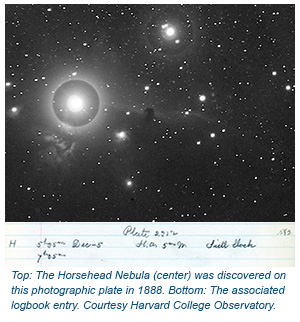Help DASCH Preserve Astronomical History & Promote Discovery
Jonathan Grindlay Center for Astrophysics | Harvard & Smithsonian
We are pleased to announce a new project that will help preserve the history and heritage of astronomy, enable the discovery of new time-domain-astrophysics phenomena, and engage the public in an important citizen-science project. The Harvard-Smithsonian Center for Astrophysics (CfA) has partnered with the Smithsonian Transcription Center to transcribe images of the pages from telescope logbooks that document the individual plate exposures from the extensive glass plate collection of the Harvard College Observatory. Approximately 100 logbooks (of ~800 total) will be transcribed to finish this required step for plate digitization (plate exposure dates/times are available only from the logbooks) now under way by the DASCH project (Digital Access to a Sky Century @ Harvard).
Our hope is that numerous volunteers from around the world will examine high-quality images of the logbook pages online and transcribe them into formatted text files that will be available for download from the DASCH website, thereby enabling the corresponding plates (including many of the most sensitive in the collection) to be digitized. These additional plates will allow the already available Data Releases (DR1, DR2, and DR3) to be augmented and for the remaining releases, DR4 through DR12, to be completed.To participate in this project, volunteers should visit the following website: https://transcription.si.edu/browse?filter=owner:11
While we understand that many AAS members do not have the time to do such transcriptions, we hope you can mention this project to any amateur-astronomy groups you speak to or otherwise interact with. Our hope is to involve as many amateur astronomers in the project as possible, since familiarity with basic astronomical concepts and terminology (RA, local sidereal time, etc.) is helpful though by no means essential. You could also consider assigning a certain number of logbook pages to your students to introduce them firsthand to where the Harvard plate data, and their associated history, came from.
While this project is specific to the logbooks for the glass plate images at Harvard, the overall process of digitizing old logbooks, notebooks, and archived material is general enough to support the preservation and transcription of other archives to make them available digitally. Through work over the past year by David Sliski, who led the effort to make the transcription project possible for DASCH, many valuable lessons have been learned that could be applied to future transcription projects. If you have such a project in mind, please feel free to contact David.
For additional information and images, see the CfA press release.


